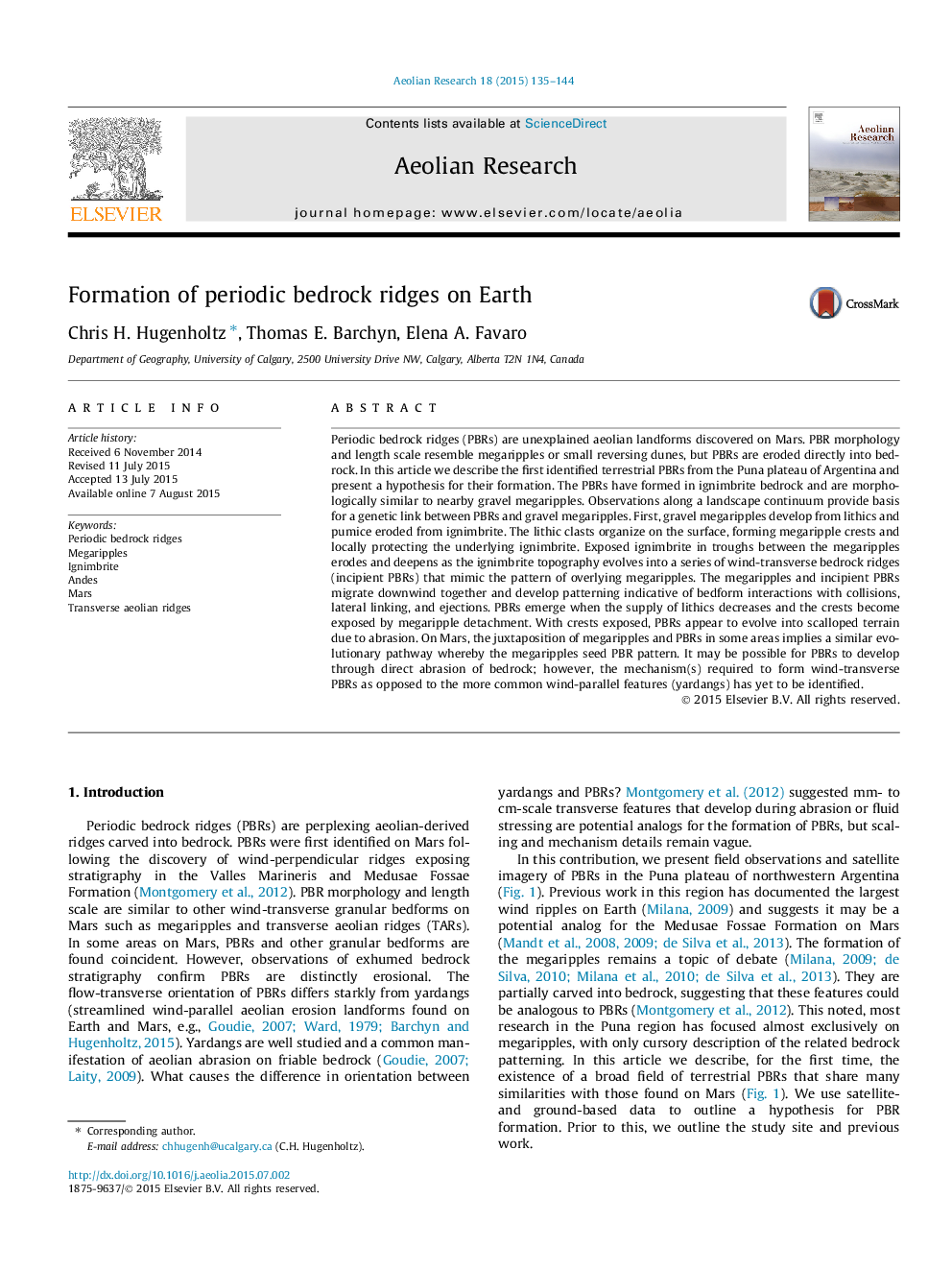| Article ID | Journal | Published Year | Pages | File Type |
|---|---|---|---|---|
| 6426403 | Aeolian Research | 2015 | 10 Pages |
Abstract
Periodic bedrock ridges (PBRs) are unexplained aeolian landforms discovered on Mars. PBR morphology and length scale resemble megaripples or small reversing dunes, but PBRs are eroded directly into bedrock. In this article we describe the first identified terrestrial PBRs from the Puna plateau of Argentina and present a hypothesis for their formation. The PBRs have formed in ignimbrite bedrock and are morphologically similar to nearby gravel megaripples. Observations along a landscape continuum provide basis for a genetic link between PBRs and gravel megaripples. First, gravel megaripples develop from lithics and pumice eroded from ignimbrite. The lithic clasts organize on the surface, forming megaripple crests and locally protecting the underlying ignimbrite. Exposed ignimbrite in troughs between the megaripples erodes and deepens as the ignimbrite topography evolves into a series of wind-transverse bedrock ridges (incipient PBRs) that mimic the pattern of overlying megaripples. The megaripples and incipient PBRs migrate downwind together and develop patterning indicative of bedform interactions with collisions, lateral linking, and ejections. PBRs emerge when the supply of lithics decreases and the crests become exposed by megaripple detachment. With crests exposed, PBRs appear to evolve into scalloped terrain due to abrasion. On Mars, the juxtaposition of megaripples and PBRs in some areas implies a similar evolutionary pathway whereby the megaripples seed PBR pattern. It may be possible for PBRs to develop through direct abrasion of bedrock; however, the mechanism(s) required to form wind-transverse PBRs as opposed to the more common wind-parallel features (yardangs) has yet to be identified.
Keywords
Related Topics
Physical Sciences and Engineering
Earth and Planetary Sciences
Atmospheric Science
Authors
Chris H. Hugenholtz, Thomas E. Barchyn, Elena A. Favaro,
